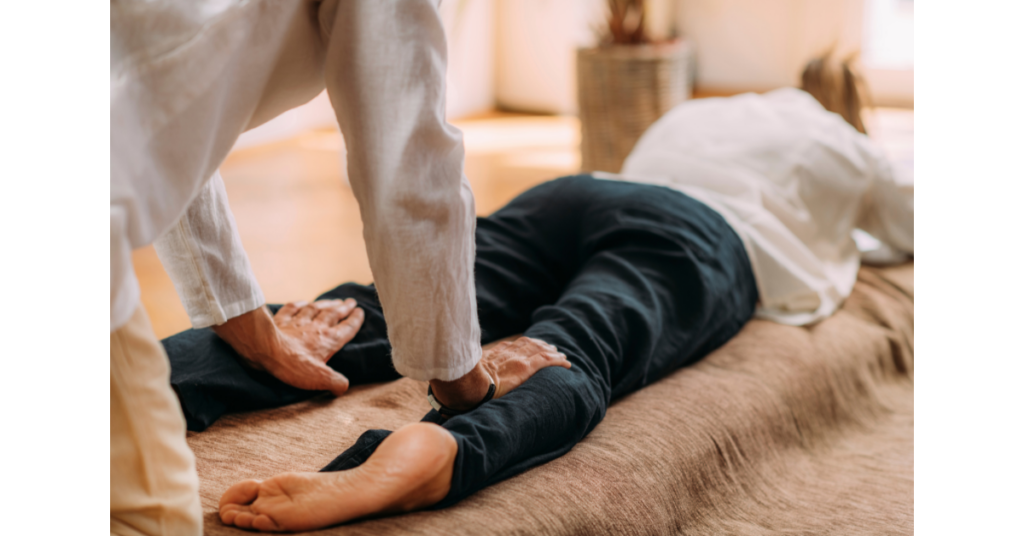Shiatsu
Shiatsu is a form of body treatment using a variety of different kinds of pressure and stretches to stimulate the flow of ‘life energy’ around the body.
This document provides general information of what to expect when you visit a therapist, and a general theory behind how the discipline works. It must be noted, however, that every therapist works in an individual way, and may subscribe to slightly different theories on how the discipline works. It is always advised that you ask to see relevant qualifications and discuss the treatment offered to you by the practitioner if you are in any doubt whatsoever.
What is Shiatsu?
Traditional Chinese Medicine (TCM) is based on the principle that there is a life energy or qi that circulates round the body and flows along channels or meridians. Shiatsu is a pressure technique applied to various parts of the body to stimulate the flow of qi. This energy can be influenced by applying pressure at various points on the body. The energy can either flow too much or too little or could be completely blocked. By feeling an area in the lower abdomen the practitioner can assess the condition of the internal organs and the meridians they correspond to, and then tailor the treatment to suit the client. The therapist is constantly ‘reading’ the body throughout the treatment in order to ascertain which areas of the body have too much energy or which areas are blocked.
Main uses
Stress and fatigue, headaches and migraine, asthma, circulatory problems, insomnia, arthritis, musculoskeletal problems and digestive disorders.
What to expect when you visit a therapist
You will be asked questions relating to your medical history and perhaps that of your immediate family. Lifestyle questions, such as stress levels, diet, exercise regimes, and sleep patterns will be asked to ensure that an holistic approach is taken, as well as asking you, the patient, what expectations you have of the treatment.
The therapist will make a variety of assessments based on a number of factors and observations such as the way you hold yourself, and the way you walk and talk. You will be asked questions on how you react to certain foods, and your ‘pulse’ will be taken – using a complex technique taken from Eastern medical techniques. The patient lies down, either on the floor on a mat or a futon. This is so that the practitioner can apply a substantial amount of pressure using their body weight. You remain fully clothed as the practitioner stimulates various acupressure points on the body with finger pressure or massage. You may find your therapist rocks you from side to side or even walks on the soles of your feet. Each session lasts around one hour and although it should not be painful, the treatment is quite vigorous. Effects of Shiatsu massage include regulation of the hormonal system, improvement in lymphatic flow, and circulation of blood. It releases muscle tension and brings about a feeling of well-being.
History (in brief)
With origins in TCM, Shiatsu was introduced to Japan around 1,500 years ago. The word Shiatsu means ‘finger pressure’, and its therapeutic potential was rediscovered by a practitioner called Tamai Tempaku. It is clearly a discipline that combines knowledge of the body in terms of anatomy and physiology derived from the Western schools along with the Eastern techniques of body work. This form of treatment received official recognition by the Japanese government in 1964.

